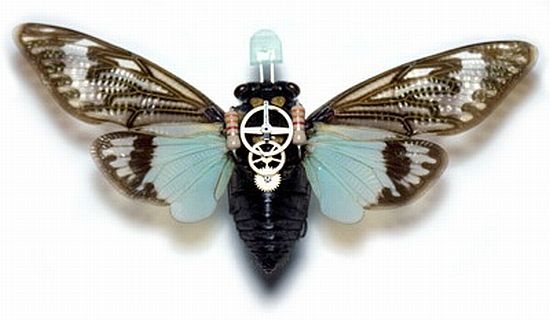Biological weapons delivered by cyborg insects. It sounds like a nightmare scenario straight out of the wilder realms of science fiction, but it could be a reality if a current Pentagon project comes to fruition.
Right now, researchers are already growing insects with electronics inside them. They’re creating cyborg moths and flying beetles that can be remotely controlled. One day, the US military may field squadrons of winged insect/machine hybrids with on-board audio, video or chemical sensors. These cyborg insects could conduct surveillance and reconnaissance missions on distant battlefields, in far-off caves, or maybe even in cities closer to home, and transmit detailed data back to their handlers at US military bases.
Today, many people fear US government surveillance of email and cell phone communications. With this program, the Pentagon aims to exponentially increase the paranoia. Imagine a world in which any insect fluttering past your window may be a remote-controlled spy, packed with surveillance equipment. Even more frightening is the prospect that such creatures could be weaponized, and the possibility, according to one scientist intimately familiar with the project, that these cyborg insects might be armed with “bio weapons”.
For the past 50 years, work by the Defense Advanced Research Projects Agency (DARPA) – the Pentagon’s blue skies research outfit – has led to some of the most lethal weaponry in the US arsenal: from Hellfire-missile-equipped Predator drones and stealth fighters and bombers to Tomahawk cruise missiles and Javelin portable “fire and forget” guided missiles.
